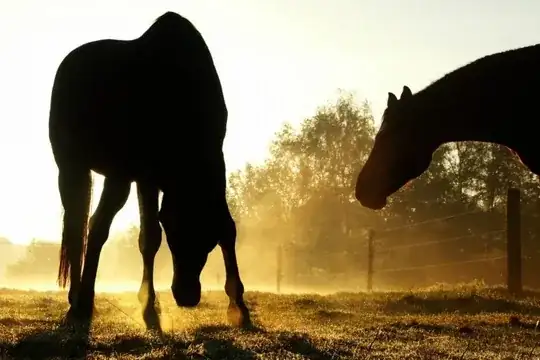Let us say that I am sitting in a room with all the drapes open. Bright sunlight is coming through the window. The whole room is brilliantly lighted. I will not be able to see the dust particles suspended in air.
Now, if I draw the drapes close, keeping a small slit open, allowing only a beam of sunlight to come in, I will readily see the suspended dust particles in that beam. The same thing will happen in a dark night with the beam of light from a handheld battery torch.
What will be the scientific explanation for this? I can not see the dust particles when I have more light. But when I actually reduce the light and there is only one narrow beam present, I can see those minuscule particles.
How does a narrow beam of light enable me to see those fine elements?
 These horses aren't black but because the ratio of the bright light to the dark horses exceeds the dynamic range of the camera the sky is washed out white and the horses are in silhouette.
These horses aren't black but because the ratio of the bright light to the dark horses exceeds the dynamic range of the camera the sky is washed out white and the horses are in silhouette.